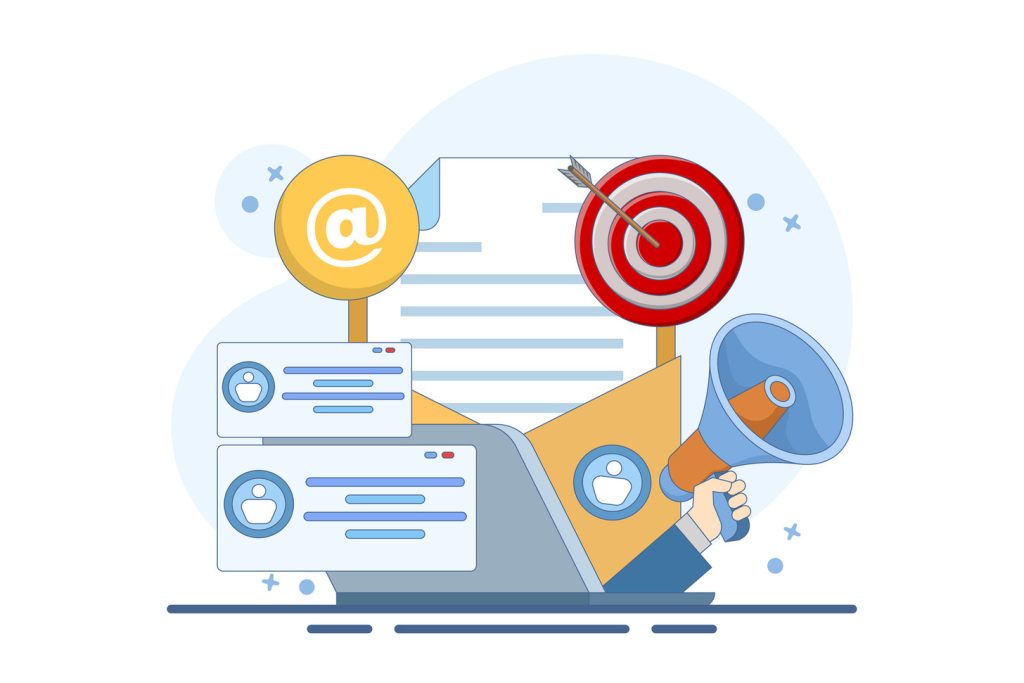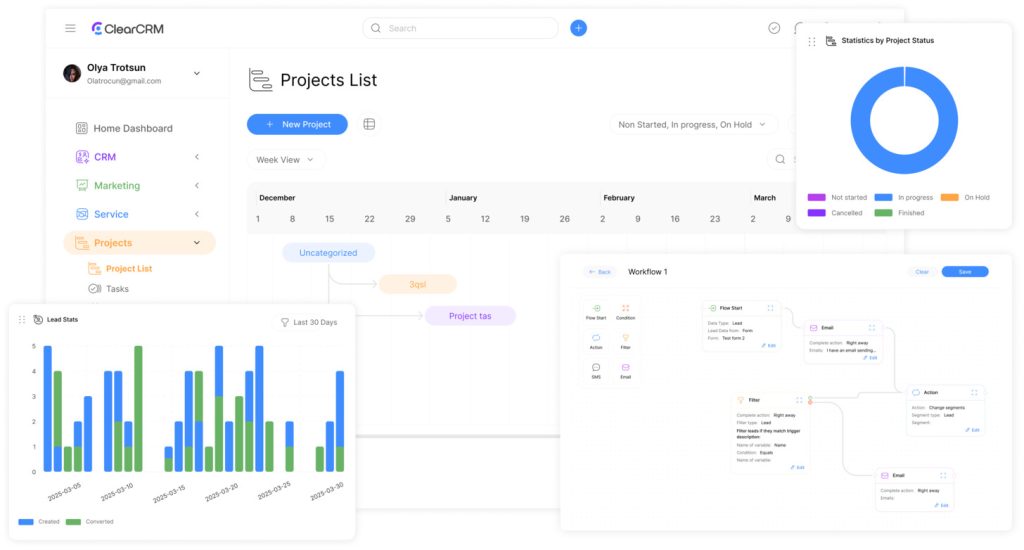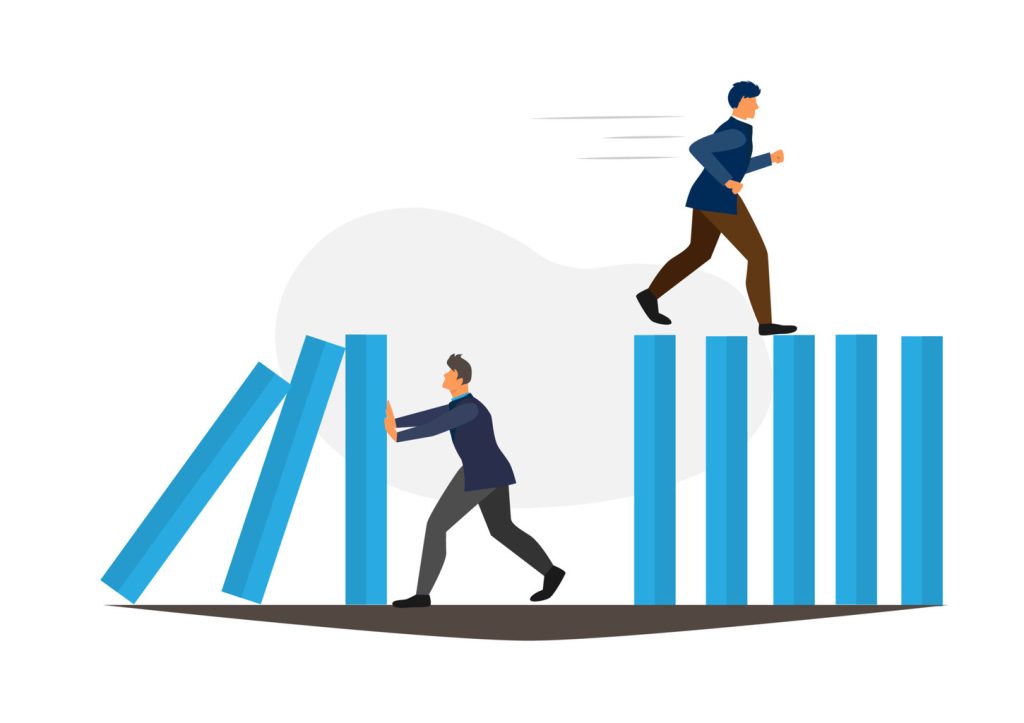Mastering CRM Campaign Management: The Ultimate Guide

In today’s competitive market, businesses need more than just customer databases to thrive, and ClearCrm offers a suite of tools designed to optimize customer relationships that have become strategic assets that connect marketing, sales, and engagement efforts. When leveraged correctly, these platforms transform raw data into actionable insights, driving measurable growth.
Far from simple storage solutions, advanced systems empower teams to craft hyper-targeted outreach. For example, integrating streamlined marketing strategies with social platforms ensures ads resonate with specific audiences. This precision turns casual prospects into loyal advocates while boosting retention rates.
Success hinges on two factors: detailed analytics and personalized communication. By analyzing behavior patterns across channels like social media, businesses refine their messaging to align with customer needs. The result? Higher conversion rates and stronger brand loyalty.
This guide explores proven methods to maximize these platforms. Readers will learn how to unify data sources, automate workflows, and execute campaigns that outperform competitors. Real-world examples illustrate the impact of aligning technology with customer-centric goals.
Key Takeaways
- Customer-focused platforms are strategic assets, not just data repositories.
- Targeted outreach powered by analytics drives conversions and retention.
- Integration with social media ads enhances audience engagement.
- Personalized communication builds trust and long-term loyalty.
- Automation and unified workflows streamline campaign execution.
Introduction to ClearCRM Campaign Management Fundamentals
Building lasting customer connections demands precision and insight-driven approaches. Effective strategies combine structured communication with data analysis to deliver tailored experiences. These initiatives focus on unifying interactions across channels, from personalized emails to timed follow-ups, ensuring every touchpoint strengthens relationships.
Defining Targeted Outreach Strategies
At their core, these strategies are systematic efforts to engage specific audience segments. They rely on customer data—like purchase history or browsing behavior—to craft messages that resonate. For instance, a clothing brand might use past buying patterns to recommend complementary items via email. This approach transforms generic promotions into relevant conversations.
Key Objectives and Metrics
Primary goals include boosting lead conversion rates and nurturing loyalty. Success hinges on tracking metrics like:
- Engagement rates: Email opens, social media clicks
- Conversion growth: Percentage of prospects taking desired actions
- Retention: Repeat purchases or subscription renewals
Platforms like those featured in this comparison of top-performing platforms simplify tracking these indicators. Analyzing trends in customer engagement helps refine tactics, ensuring campaigns align with broader business targets like revenue growth or market expansion.
Benefits of an Integrated CRM System for Campaign Success

Businesses thrive when all team members have access to unified customer insights. Integrated platforms break down data silos, enabling departments to collaborate seamlessly. This unified approach ensures marketing, sales, and support teams work toward shared goals—like boosting retention or refining media ads targeting.
Centralizing Customer Data
A single source of truth eliminates fragmented records. Teams can track interactions—from email opens to social media clicks—within a single platform. For example, sales reps instantly see if a prospect engaged with recent email campaigns before making calls.
Duplicate profiles drain resources. Centralized systems merge overlapping entries, freeing teams to focus on strategy. Marketing and support teams share real-time updates, ensuring consistent messaging across channels like media ads or live chats.
Enhancing Customer Insights
Unified data reveals patterns that drive smarter decisions. Analyzing purchase histories and browsing behavior helps tailor email campaigns to individual preferences. A travel company, for instance, might suggest ski resorts to customers who frequently search winter destinations.
Deeper insights also refine media ads targeting. Brands identify high-value segments, delivering promotions that resonate. Over time, personalized interactions strengthen customer relationships, turning one-time buyers into loyal advocates.
By aligning teams and data, businesses nurture customer loyalty while maximizing campaign ROI. The result? Higher retention rates and measurable growth.
Developing a Comprehensive ClearCRM Campaign Strategy
Businesses with documented strategies are 30% more likely to exceed revenue targets. This underscores why meticulous planning forms the backbone of impactful initiatives. Teams must first define what success looks like—whether boosting repeat purchases or expanding market share—before activating tools.
Setting Goals and KPIs That Drive Results
Clear objectives stem from analyzing customer behavior and data. For example, a retailer might aim to increase upsell rates by 15% within six months. Measurable KPIs like email click-through rates or social media shares then track progress. “You can’t improve what you don’t measure,” notes a 2024 HubSpot report, emphasizing data-driven decision-making.
Tailoring marketing messages using purchase history ensures relevance. A fitness brand could segment audiences based on past buys—sending yoga mat promotions to activewear shoppers. This precision avoids generic blasts that dilute engagement.
Connecting Outreach to Organizational Vision
Strategies thrive when tied to company-wide priorities like customer retention or cost reduction. A SaaS company might align outreach with reducing churn by 20%, using view customer interaction data to identify at-risk accounts. Structured workflows then break down tasks:
- Map customer journeys using purchase history
- Design marketing messages for each lifecycle stage
- Assign roles for content creation and performance reviews
This alignment ensures every team member understands how their efforts contribute to overarching goals—turning isolated actions into coordinated growth engines.
CRM campaign management: Best Practices for Modern Marketers

Personalized engagement separates industry leaders from competitors. Brands that tailor interactions based on behavior see 40% higher conversion rates than those relying on generic outreach. To achieve this, teams must master two pillars: precision segmentation and dynamic content delivery.
Turning Data Into Relevance
Segmentation tools categorize audiences by traits like purchase frequency or browsing patterns. Spotify, for example, groups users based on listening habits—sending curated playlists to “Indie Rock Fans” or “Podcast Enthusiasts.” This approach drives 3x more email clicks compared to untargeted blasts.
Modern software automates these processes. Zapier connects platforms like Shopify and Mailchimp, triggering personalized follow-ups when customers abandon carts. “Automation isn’t about replacing humans—it’s about scaling relevance,” explains a 2024 Gartner report. These systems adjust messaging in real-time, ensuring promotions align with individual interests.
Three strategies amplify results:
- Behavioral triggers: Send discount codes after repeated product views
- Demographic layers: Adjust tone for Gen Z vs. Baby Boomer audiences
- Predictive analytics: Anticipate needs using past purchase data
A skincare brand increased repeat sales by 22% after segmenting customers by skin type. Targeted marketing emails recommended compatible products, reducing irrelevant offers. Continuous A/B testing refined subject lines and visuals, boosting open rates by 17% monthly.
Success demands ongoing analysis. Review metrics like click heatmaps and time-of-day engagement to optimize send times. Pair software capabilities with creative experimentation—because today’s winning tactic becomes tomorrow’s baseline expectation.
Leveraging Customer Data for Targeted Marketing Campaigns
Modern businesses thrive by transforming raw information into actionable strategies. Robust customer data fuels personalized outreach, allowing brands to deliver messages that resonate with specific needs. When teams categorize audiences using behavioral, demographic, and transactional insights, they unlock precision unmatched by generic tactics.
Building Relevance Through Segmentation
Effective segmentation starts with analyzing three core data types:
- Demographic: Age, location, income
- Behavioral: Browsing patterns, cart abandonment rates
- Transactional: Purchase history, average order value
A fitness apparel company, for example, might target yoga enthusiasts differently than marathon runners. By tailoring emails based on activity preferences, they achieved a 29% increase in repeat purchases. “Segmentation isn’t just grouping—it’s predicting needs before customers articulate them,” notes a 2024 Salesforce report.
| Segmentation Type | Data Used | Outcome Example |
|---|---|---|
| Loyalty Tier | Purchase frequency, spend | VIP discounts boost retention by 18% |
| Engagement Level | Email opens, social clicks | Re-engagement offers reduce churn by 12% |
| Product Affinity | Category views, wishlists | Cross-sell emails lift revenue by 22% |
Centralized platforms ensure data accuracy by merging duplicate profiles and updating records in real time. Marketing and sales teams collaborate to refine strategies—like adjusting social ad visuals for underperforming regions. Quarterly reviews of metrics like click-through rates help identify trends, ensuring tactics evolve with shifting preferences.
Integrating Social Media Ads and Email Campaigns

Unifying social media and email efforts amplifies brand reach while eliminating fragmented messaging. When platforms like Instagram ads align with email sequences, companies create seamless journeys that guide prospects from discovery to purchase. This synergy ensures audiences receive consistent narratives across channels—boosting recall and response rates.
Automating Email Workflows
Trigger-based emails nurture leads without manual effort. For example, Sephora sends product recommendations within 24 hours after users browse specific skincare items online. These automated sequences use customer behavior data to deliver timely, relevant content.
Three steps streamline workflow creation:
- Identify key triggers: cart abandonment, page visits, or content downloads
- Design personalized templates for each scenario
- Test send times and CTAs using A/B tools
Brands using this approach see 35% higher open rates than generic blasts.
Maximizing Social Media Engagement
Social platforms thrive on hyper-relevant content. Nike analyzed purchase histories to craft Instagram ads showcasing running shoes to marathon trainees and casual sneakers to lifestyle audiences. This precision increased click-through rates by 27%.
Best practices include:
- Retargeting email subscribers with complementary media ads
- Scheduling posts when analytics show peak activity
- Embedding social proof (reviews) in both channels
By bridging these touchpoints, companies like Glossier reduced customer acquisition costs by 19% while maintaining cohesive branding.
Harnessing Automation and Analytics in Campaign Management
Real-time insights and machine learning now drive smarter outreach strategies. Companies using automated analytics achieve 23% faster decision-making than manual methods. These tools turn raw metrics into actionable steps, ensuring teams adapt to trends before opportunities fade.
Real-Time Reporting and Adjustments
Instant dashboards track performance across channels—email opens, social clicks, and conversion rates. A retail brand reduced response delays by 41% after adopting live reporting features. Teams now spot underperforming ads within hours instead of weeks.
| Metric | Manual Tracking | Automated System |
|---|---|---|
| Data Updates | 24-48 hours | 15-minute intervals |
| Error Rate | 12% | 3% |
| Strategy Pivots | Monthly | Daily |
Automation triggers adjustments based on preset rules. If engagement drops below targets, platforms redistribute budgets to high-performing channels. “Speed separates market leaders from followers,” states a 2024 McKinsey analysis of 800 enterprises.
Utilizing AI for Content and Task Automation
Machine learning tools draft personalized emails using customer behavior patterns. A travel agency saw 31% higher open rates after implementing AI-generated subject lines. These systems also:
- Prioritize leads needing immediate follow-up
- Predict optimal send times for emails
- Flag outdated content in marketing materials
Advanced features like sentiment analysis refine messaging tone. One SaaS company reduced support tickets by 19% after AI tools identified confusing language in their guides. Continuous learning algorithms ensure improvements compound over time—turning yesterday’s data into tomorrow’s advantage.
Examples and Case Studies of Successful CRM Campaigns

Industry leaders prove their strategies through measurable outcomes. Three sectors—e-commerce, travel, and SaaS—demonstrate how tailored approaches drive growth. Below, real-world cases reveal patterns for replicating success.
E-Commerce Personalization Success Stories
ASOS boosted repeat purchases by 34% using behavior-based recommendations. Their tools tracked browsing history to suggest complementary items. Customers received emails showcasing recently viewed products paired with trending accessories.
A beauty retailer segmented audiences by skin type and purchase frequency. Automated emails offered regimen tips and restock reminders. This approach reduced cart abandonment by 28% while increasing average order value.
Innovative Approaches in Travel and SaaS
Airbnb increased bookings by 19% using dynamic pricing automation. Their system adjusted rates based on demand spikes and local events. Travelers received personalized offers during peak planning seasons.
HubSpot nurtured leads with targeted email sequences. Prospects received case studies matching their industry challenges. This strategy lifted free-to-paid conversions by 41% in six months.
| Company | Strategy | Tools Used | Outcome |
|---|---|---|---|
| ASOS | Behavior-triggered emails | Product recommendation engine | 34% repeat sales growth |
| Airbnb | Dynamic pricing adjustments | Demand forecasting software | 27% revenue increase |
| HubSpot | Industry-specific nurturing | Email sequencing platform | 41% conversion boost |
These cases share three lessons: automate repetitive tasks, prioritize hyper-relevant messaging, and track customer journeys across channels. Brands that master this triad consistently outperform competitors.
Maximizing Team Collaboration and Workflow Efficiency
Effective teamwork transforms fragmented efforts into cohesive strategies. When marketing teams align around shared goals, they eliminate duplicated tasks and conflicting priorities. Centralized platforms like ClickUp provide the infrastructure needed to synchronize roles, deadlines, and customer insights.
Centralizing Communication Channels
A 2024 Asana study found companies using unified tools resolve issues 45% faster. Platforms consolidate messaging, file sharing, and task tracking into one interface. ClickUp’s shared dashboards, for example, give real-time visibility into project statuses—cutting redundant check-ins by 33%.
Teams using these systems report 32% fewer errors in customer-facing content. Automated workflows assign tasks based on expertise, ensuring the right member handles each offer or loyalty initiative. Centralized feedback loops let teams refine strategies collaboratively, like adjusting promotional offers after analyzing engagement data.
Three practices enhance collaboration:
- Integrating cross-departmental calendars to avoid scheduling conflicts
- Standardizing templates for proposals and social media content
- Using @mentions to escalate urgent requests efficiently
Dashboards act as a single source of truth, tracking metrics like offer redemption rates or loyalty program growth. Leaders allocate resources effectively—shifting budgets to high-performing content or underutilized capabilities. “Visibility into progress removes guesswork and builds accountability,” states ClickUp’s 2024 Productivity Report.
Clear processes and shared tools turn isolated contributors into a unified force. The result? Consistent customer experiences and stronger loyalty through every interaction.
Overcoming Challenges in Digital Campaign Management

Disconnected systems drain productivity. Teams waste hours reconciling conflicting data from emails, spreadsheets, and ads platforms. Fragmented information leads to missed opportunities—like retargeting lapsed buyers with outdated preferences.
Breaking Down Data Barriers
Integrated tools merge siloed records into a unified dashboard. For example, linking social ads data with email analytics reveals which campaigns drive repeat purchases. Real-time updates ensure teams act on fresh insights, not yesterday’s reports.
Three steps resolve integration hurdles:
- Audit existing systems to identify redundant tools
- Adopt platforms with open APIs for seamless data flow
- Schedule weekly syncs to monitor information accuracy
Brands using solutions like unified customer platforms reduce workflow delays by 53%. Marketing teams access purchase histories alongside social engagement metrics, enabling hyper-targeted promotions. One retailer boosted holiday sales by 19% after syncing inventory data with email ads.
Proactive integration cuts costs and errors. Automating data transfers between tools saves 8-12 hours monthly—time better spent refining strategies. As teams share information instantly, campaigns adapt to trends faster than competitors can react.
Conclusion
Mastering customer-focused strategies requires a blend of precision and adaptability. Successful businesses unify data streams, automate repetitive tasks, and foster cross-team collaboration to drive growth. These elements transform fragmented efforts into cohesive systems that elevate every customer interaction.
Centralizing insights ensures teams deliver consistent, personalized service across channels. Automation tools refine outreach timing and content relevance, while analytics spotlight trends that boost retention. For example, brands using real-time behavior tracking see 31% faster response rates to shifting preferences.
Key outcomes emerge when strategies align with industry standards:
- Hyper-targeted product recommendations increase repeat purchases
- Unified communication platforms reduce operational delays by 45%
- Data-driven adjustments improve customer lifetime value
Forward-thinking organizations now treat customer interactions as growth accelerators. By scaling proven tactics and embracing agile workflows, teams secure lasting loyalty in competitive markets. The path to outperformance starts today—implement these methods to turn insights into measurable advantage.

